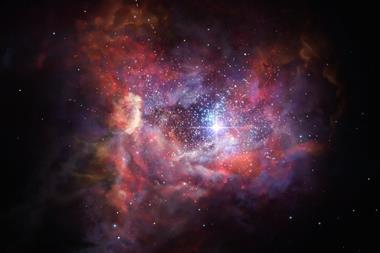Space exploration is a worthy enterprise
If you’ve ever found yourself in a conversation about space exploration (who hasn’t at the moment?) you will no doubt have encountered this argument: we shouldn’t be spending all this money on space programmes when we have problems closer to home. It seems a bit rich that space exploration should be picked upon as being a wasteful or frivolous endeavour – I guess space is an easy target, what with it being so vastly, hugely, mind-bogglingly big. But one can readily find plenty of earthbound extravagances. For example, my last conversation on this theme took place at a book launch with two champagnes on offer. Two! And I barely have the palate to distinguish ketchup from yoghurt.
At least the investment in space exploration has a solid defence in its terrestrial benefits. There have been myriad transfers of technology and innovations from space programmes to everyday life: memory foam, cochlear implants, baby food, water filters, scratch resistant lenses, emulsified zero-valent iron, even insoles for trainers. And how much do we spend on space? Well, a lot – but it’s relative. The New Horizons mission to Pluto (estimated cost $700 million (£450 million)) is roughly equivalent to the production costs of the third and fourth instalments of the Pirates of the Caribbean movie franchise. The Curiosity Mars Science Laboratory programme cost around $2.5 billion (spent over eight years) – which is the amount Microsoft spent (in one year) on acquiring the company that made the computer game Minecraft.
My examples above are flippant but they start to paint a picture of the relatively low cost of space exploration. It’s good value for money. As you read through our features in this issue, you’ll quickly see how much innovation has come from the scientists working on solving the problems of space exploration, and how many of those innovations are already proving useful in more local settings.
One might ask why we needed to go to space to achieve all this. Sometimes you don’t have to – Harry Kroto and colleagues brought space to the lab and discovered C60. Now John Maier and his team have proven that fullerenes are partly responsible for the ‘diffuse interstellar bands’, whose source has eluded scientists for a century, proving Kroto right and giving his earth-bound science its rightful place in the stars. Whether as destination or inspiration, space provides us with the challenges, the adversities and the curiosities that are irresistible to scientists.
So, what should you do the next time someone bemoans the cost of space exploration while sloshing Chablis on your shoes? You could robustly defend the excellent return on investment. You could give a long list of innovations born from astral ambitions. You could probably even convince him or her space exploration is pretty cheap compared to a few hammy pirate movies. Or you could just politely nod, and look up at the stars while they worry about the gutters.












No comments yet